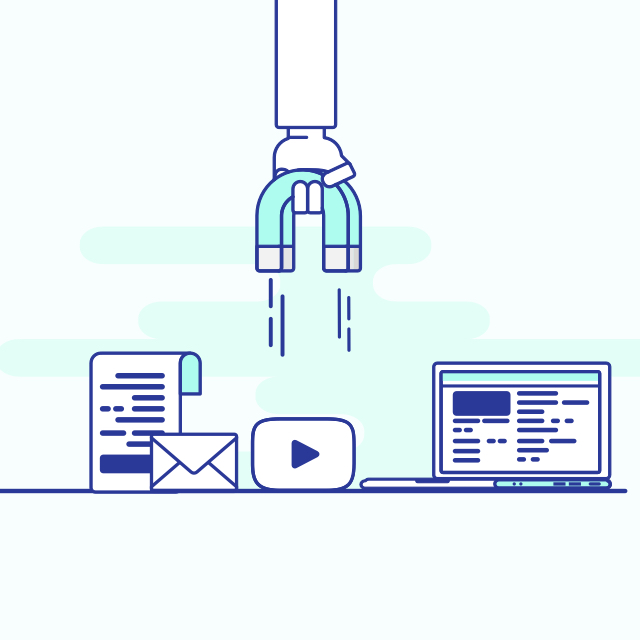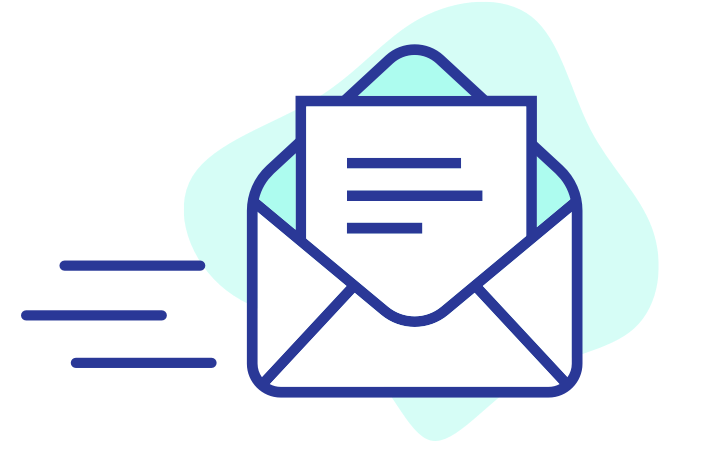
What if, instead of constantly trying to find customers, there was a way for your business to simply attract the ones best-suited to your products and services? Rather than running after every individual and exhausting your resources (and time), consider the possibilities of your perfect-fit customers coming right to you. While that might sound like a concept that’s too good to be true, it’s actually the focus – and the result – of inbound marketing.
What is Inbound Marketing?
Inbound marketing is a method that incorporates a variety of strategies and comes from a place of trying to be helpful to your customers and solve the needs that they have. It’s about providing value to your target audience to address their desires and pain points in the forms of content marketing, social media, and blogging, to name a few. It’s a direct contrast to outbound marketing, because instead of trying to forcibly insert yourself into consumers’ lives, inbound marketing allows them to find you via genuine connections and quality content.
Today’s consumers are more empowered and informed than ever before, redefining how and when to make a connection. Now, the goal isn’t necessarily to chase down potential customers searching for products and services. Instead, it’s become more about reaching them early in their decision-making process and cementing your brand as helpful, trustworthy, and relevant. It doesn’t matter what kind of business or organization you’re running; inbound marketing is one of the most effective ways to win more customers and expand your brand’s reach.
Five Ways to Make Inbound Marketing Work for You
Whether you’re just beginning to dive into inbound marketing or you’re ready to brush up on your current approach, having a solid foundation of effective strategies is key. To help you get started, we’ve rounded up the top five inbound marketing strategies that every business absolutely needs:

1. Consistent, High-Quality Blogging
If you could name just three “must-dos” of a successful business, the list would probably look something like this: be seen, be trusted, and be useful. With a consistent blog/blogging strategy, you can cross all three off the list and make your first foray into inbound marketing. Here’s how:
- A blog lets your customers know that your doors (virtual and in-person) are open for business. Regularly showing up online with blog content communicates that your business or organization is active, engaged, and prepared to meet their needs.
- A blog provides potential customers with education. One of the best ways to win customers is to prove that you’re a source to be trusted, and relevant and useful blog posts do exactly that. Show customers that your brand is the one with all the answers, and they’ll feel confident in future decisions to buy your products or services.
- A blog gets your brand in front of an interested audience. With thoughtfully-crafted blog posts, you can boost your SEO and improve your online visibility. Making sure that your blog content is consistently updated is a key factor in maintaining a good SEO ranking, ensuring that your website comes up for potential customers in the midst of buying decision research.
Another huge benefit of blogging for business is that it can deliver a major return on investment. It makes smart use of your advertising budget, all while coming with lower costs than many other marketing methods.

2. Email Marketing Automation
When you’re trying to connect with customers through their inbox, email marketing automation allows you to work smarter, not harder. By automating the process, you’ll be able to develop finely-tailored “triggers,” which send relevant emails at specific points for a customized experience on the customer end. Typically, your website’s triggers will be tailored to suit your larger goals, but common ones include:
- A welcome email after a user joins a subscriber list
- Reconnection emails when a user has placed items in their virtual cart but has not completed a purchase
- Confirmation and thank you emails after a user submits an order
- Feedback request emails, either after a certain amount of time or following a negative experience
- Re-engagement emails, such as special offers, to reach out to users who haven’t interacted with your site or emails in a while
Email marketing automation is an effective inbound marketing strategy because it maximizes efficiency while building and maintaining a customer relationship. Because you’ll be delivering customized, relevant content directly into the inboxes of new and existing customers, conversion rates will rise. Plus, you’ll have a valuable resource in the segmented email lists that are continuously updated based on user data.
3. Visual Information and Education
Like blogs, webinars and videos present an excellent opportunity to educate and inform your new and potential customers alike. While webinars are often preferable for B2B content marketing, videos in general can be used for virtually any customer base.
When users see a video that illustrates how your business can solve their most pressing problems, it sets the stage for a productive dialogue – one that can result in solid leads. Consider what it is that your target audience wants and needs, then create engaging video content that directly addresses those topics in a way that establishes you as the chief problem-solver. By the time the video winds down, you can present yourself as a trustworthy leader that holds the solutions to viewers’ problems, making you their newest go-to brand.

4. Downloadable Offers
Downloadable offers, such as white papers, e-books, and guides, fall under a larger umbrella of inbound marketing known as “gated content.” This virtual gate requires an online user to provide basic information (usually an email address) in order to access the content. You generate leads while your audience receives an incentive – in other words, it’s a win-win for everyone involved.
Blog posts make an outstanding pairing with these downloadable offers, introducing the topic and then providing a content upgrade of sorts to users who are willing to provide their contact details. It gives users the sense that because they have to put forth their own information to gain access, the information has a certain added worth.
5. Interactive Content
Our final pillar of inbound marketing is interactive content, which can take the form of surveys, quizzes, and short assessments. There is a catch, though: if you want users to interact with this type of content, you’re going to need to offer them something in return. With a tempting discount or voucher on the table, an online user is much more likely to complete a survey or quiz and give you the leads you want and need.
Keep things short, simple, and fun when creating interactive content, personalizing it as much as possible. And remember that the process shouldn’t end once the user hits “submit” – utilize the details you’ve gathered to keep in touch with potential customers long after the fact.
Tap into Your Inbound Marketing Potential with Help from Page Design
As you’re preparing to make inbound marketing a part of your core strategy, you can count on Page Design to have you covered with all the resources and expertise you need. With our help, Sacramento businesses and organizations of all sizes and types have discovered the difference that inbound marketing can make. When it comes to updating the way you connect with customers, the time is now. Contact Page Design and let us help you create inbound marketing assets that serve your company and your goals.





